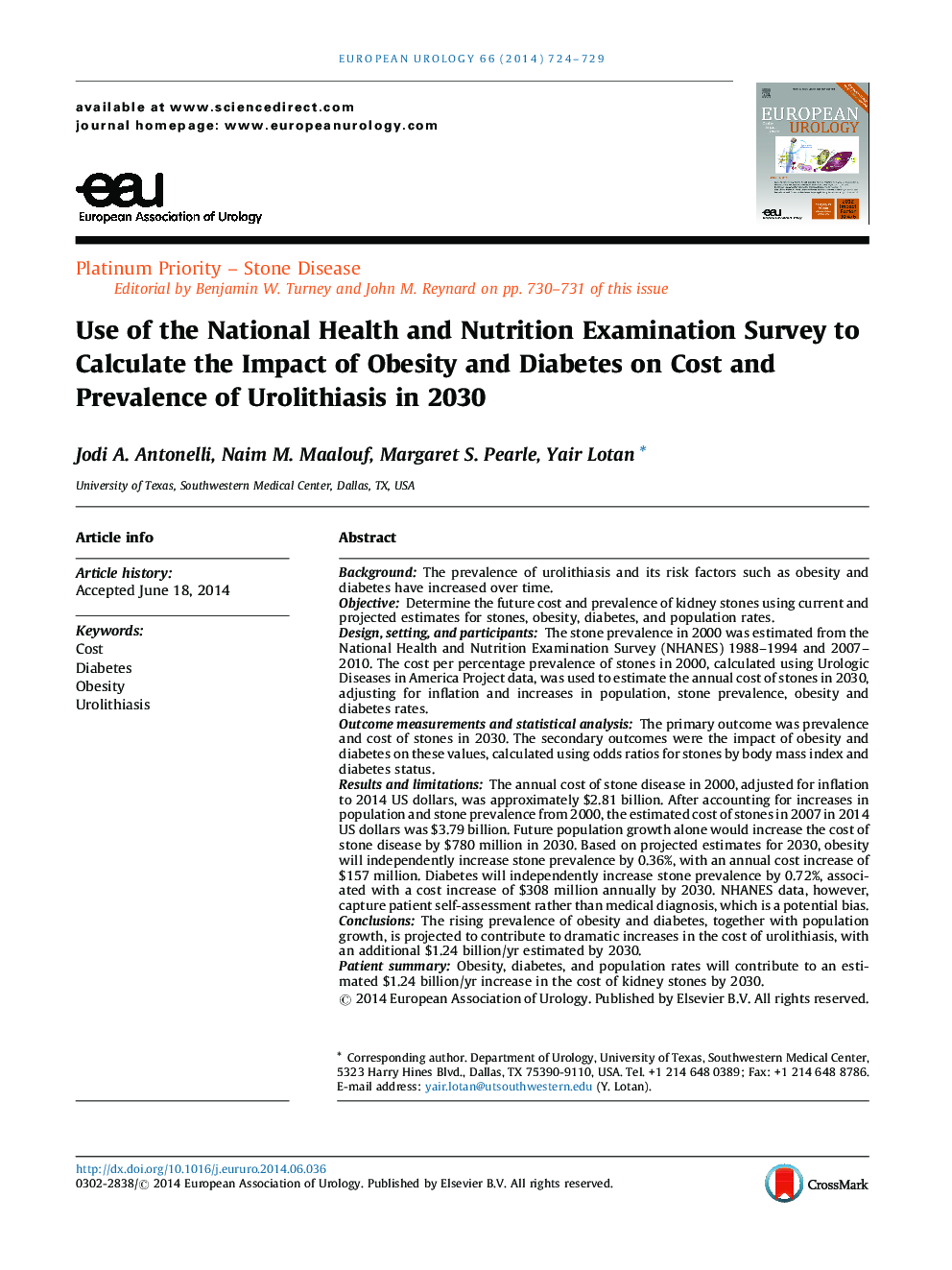| کد مقاله | کد نشریه | سال انتشار | مقاله انگلیسی | نسخه تمام متن |
|---|---|---|---|---|
| 6178050 | 1253118 | 2014 | 6 صفحه PDF | دانلود رایگان |
BackgroundThe prevalence of urolithiasis and its risk factors such as obesity and diabetes have increased over time.ObjectiveDetermine the future cost and prevalence of kidney stones using current and projected estimates for stones, obesity, diabetes, and population rates.Design, setting, and participantsThe stone prevalence in 2000 was estimated from the National Health and Nutrition Examination Survey (NHANES) 1988-1994 and 2007-2010. The cost per percentage prevalence of stones in 2000, calculated using Urologic Diseases in America Project data, was used to estimate the annual cost of stones in 2030, adjusting for inflation and increases in population, stone prevalence, obesity and diabetes rates.Outcome measurements and statistical analysisThe primary outcome was prevalence and cost of stones in 2030. The secondary outcomes were the impact of obesity and diabetes on these values, calculated using odds ratios for stones by body mass index and diabetes status.Results and limitationsThe annual cost of stone disease in 2000, adjusted for inflation to 2014 US dollars, was approximately $2.81 billion. After accounting for increases in population and stone prevalence from 2000, the estimated cost of stones in 2007 in 2014 US dollars was $3.79 billion. Future population growth alone would increase the cost of stone disease by $780 million in 2030. Based on projected estimates for 2030, obesity will independently increase stone prevalence by 0.36%, with an annual cost increase of $157 million. Diabetes will independently increase stone prevalence by 0.72%, associated with a cost increase of $308 million annually by 2030. NHANES data, however, capture patient self-assessment rather than medical diagnosis, which is a potential bias.ConclusionsThe rising prevalence of obesity and diabetes, together with population growth, is projected to contribute to dramatic increases in the cost of urolithiasis, with an additional $1.24 billion/yr estimated by 2030.Patient summaryObesity, diabetes, and population rates will contribute to an estimated $1.24 billion/yr increase in the cost of kidney stones by 2030.
Journal: European Urology - Volume 66, Issue 4, October 2014, Pages 724-729
